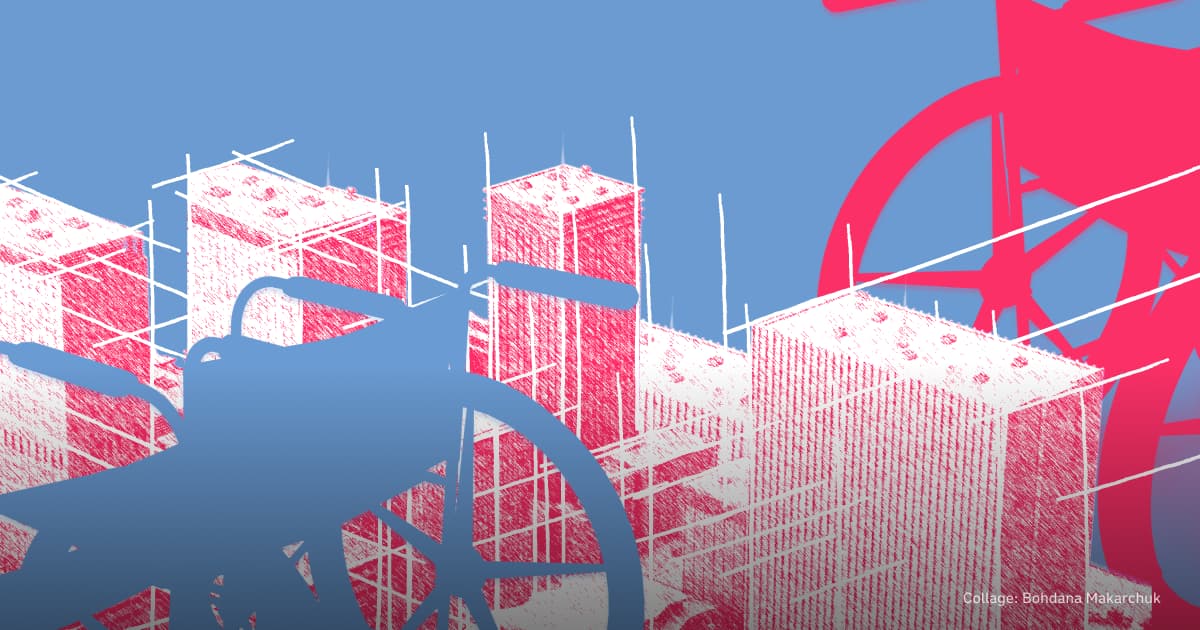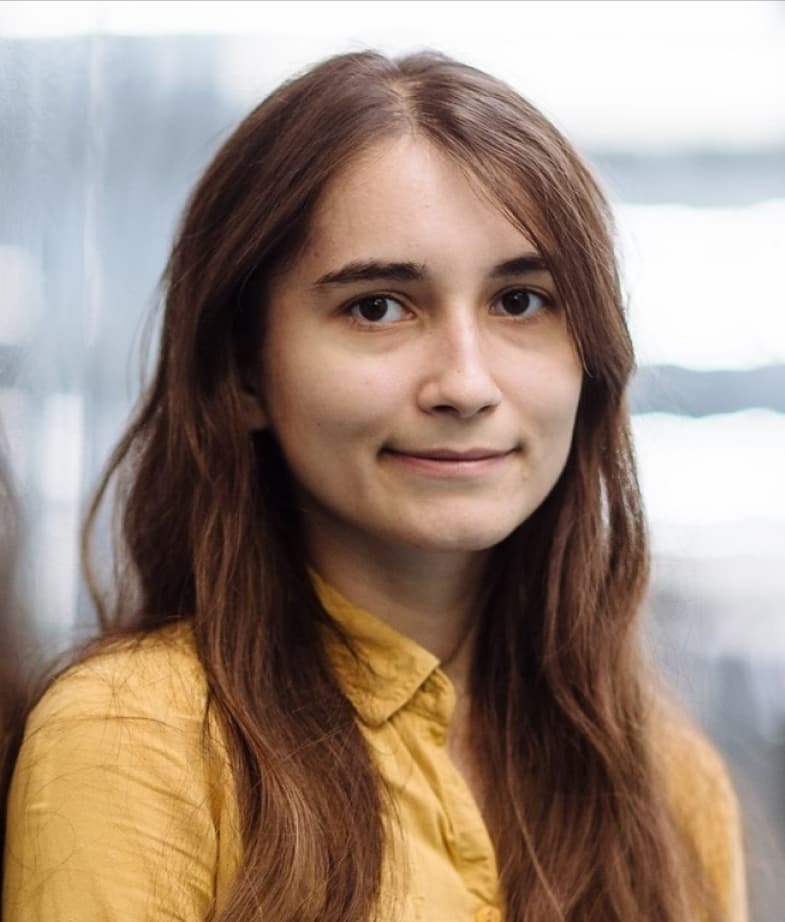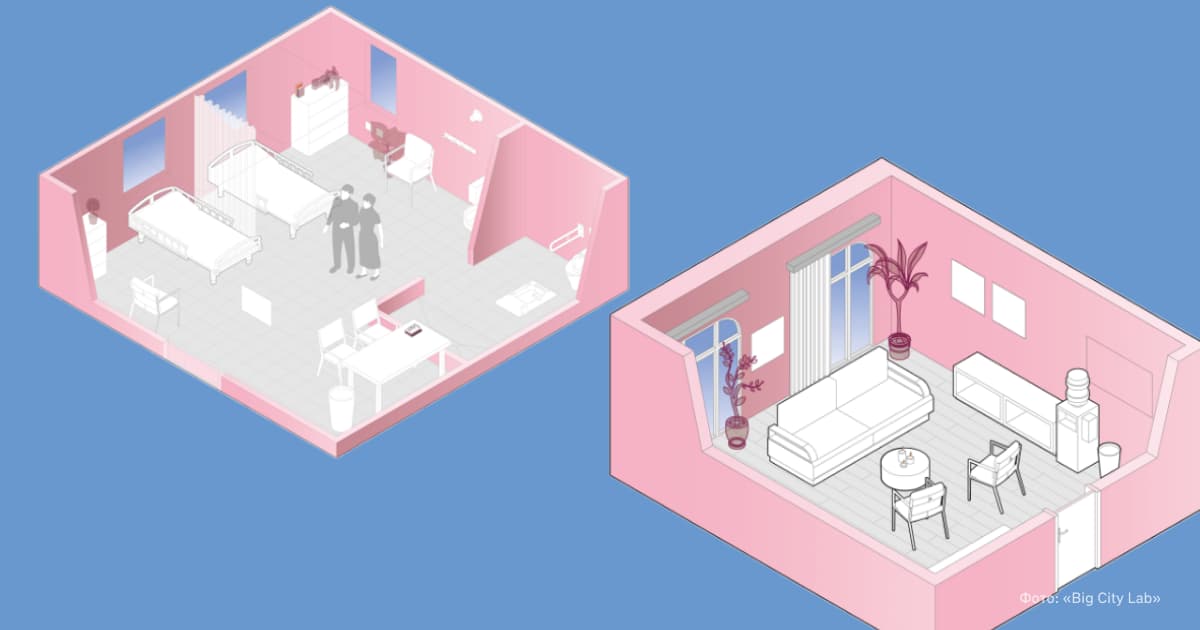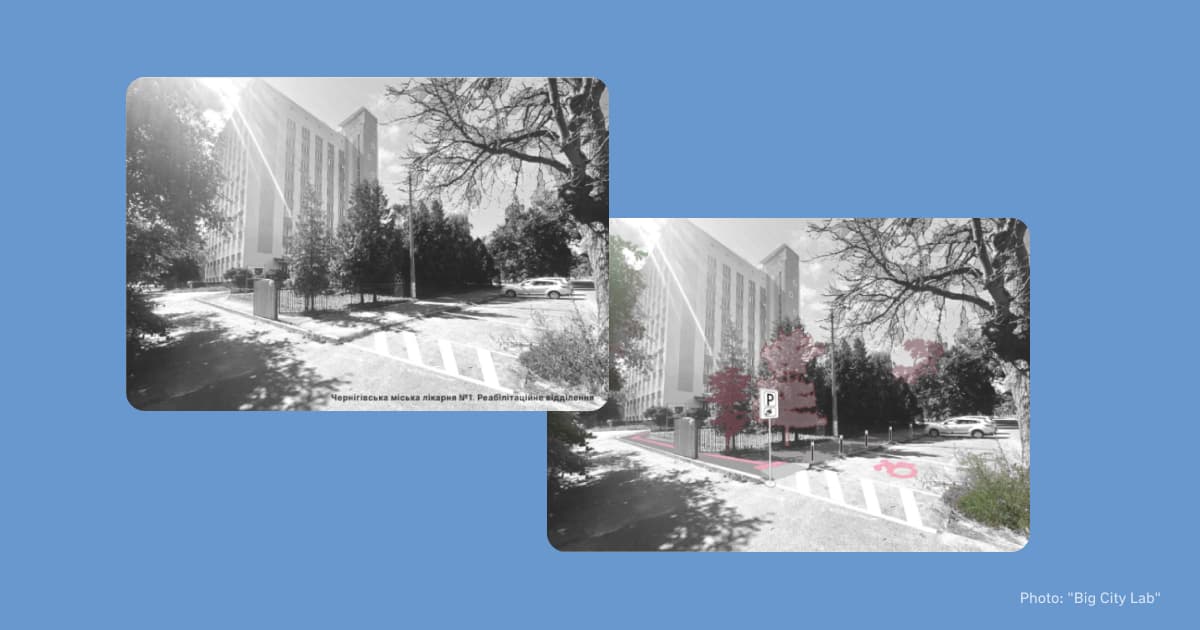Rehabilitation services in Ukraine. Problems, challenges and how to overcome them

According to the World Health Organization, rehabilitation is a set of interventions to optimise functioning and reduce disability in people with health conditions.
Rehabilitation services are provided in all healthcare facilities, including primary healthcare institutions, hospitals (especially during outpatient treatment) or community-based settings.
Russia's full-scale invasion of Ukraine has increased the need for rehabilitation units. These are often located in hospitals or hospital buildings. However, the arrangement of rehabilitation units in buildings constructed to outdated standards has certain consequences in terms of barriers for people with reduced mobility, both for patients and visitors.
Read the article to learn more about the state of rehabilitation centres in Ukraine and the challenges encountered during rehabilitation through the experiences of people with disabilities.
The state of rehabilitation centres in Ukraine
At the request of the World Bank, the urban bureau Big City Lab conducted an accessibility survey of 20 rehabilitation centres in Ukraine. Sofiia Brem, an architectural accessibility researcher who studied the medical facilities, explains to Svidomi that the most common physical barriers around hospitals are undivided pedestrian and car lanes. She says this can pose a risk of injury, particularly for people undergoing rehabilitation, as they are less able and move more slowly.
The most common barrier in rehabilitation centre buildings is the lack of accessible toilets for people with reduced mobility. Problems also exist with the location of doors, additional thresholds, and furniture around places where people need to manoeuvre or pass easily.
"Another problem is the inability to move around independently in rehabilitation units. It is impossible to get into a wheelchair, go to the toilet, café, or outside and return on your own. There is no such thing," says the architect.
Sofiia Brem explains that during the Soviet era (1922 to 1991 — ed.), accessible space was not a priority. Over time, few buildings were renovated as most funds were allocated to providing new equipment or repairing existing space, including roof replacement and minor repairs.

"I have seen a physical rehabilitation room with an overhead punching bag hanging in the way of the ceiling lift. There is no culture or habit of properly planning the room and designing everything. People do not understand the intricacies of accessibility. It is more important for them to have equipment and to provide a service. But the service does not work without a functional space,"
says Sofiia Brem.
Based on the study's results, the Big City Lab team developed a Guide to Accessible Rehabilitation Units, which shows the best ways to create accessible space, taking into account national building standards, some suggestions from international guidelines, and the principles of versatile design.
A team of architects and physical accessibility specialists has developed recommendations on what to consider when creating accessible rehabilitation spaces from old Soviet buildings.
One example of a high-quality rehabilitation unit is the Superhumans Centre in Lviv, Ukraine. This comprehensive medical facility provides prosthetics and rehabilitation for patients, primarily those who have been injured due to the war.
Uliana Pcholkina is a disabled rights campaigner and board member of the NGO Active Rehabilitation Group. She was injured in a car accident in 2005.

"I was treated (after 2005 — ed.), but not adapted to my condition. For over a year, I could not put on trainers, dress or take care of myself. Although my arms work as I do not have the highest level of spinal cord damage. It was not until I met the first contact instructors in active rehabilitation that I fully mastered the skills and knowledge related to spinal cord injury. There were no conditions for a decent stay in the rehabilitation unit. All the people who depended on someone had to go to the toilet lying on the bed,"
Pcholkina recalls.
Uliana Pcholkina recalls that during her rehabilitation, she could not shower or bathe alone. She needed three to five people to help her.
In 2024, the NGO Active Rehabilitation Group trained medical staff at the hospital where Uliana was undergoing rehabilitation. But just as in 2005, there was no perfectly accessible space.
"Most hospitals have accessibility issues. People in the most vulnerable state of their lives need a simple, caring, safe space. But people try to run away from the hospital to go home to be treated in an accessible space, and it should be the other way round. Rehabilitation units should smoothly restore social skills after medical intervention," explains architect Sofiia Brem.
Lack of qualified personnel
Veteran Oleksandr 'Teren' Budko, who was wounded and lost two lower limbs, notes that doctors and medical staff have a heavy workload due to the increase in the number of people with lost limbs. In his opinion, this also has an impact on the morale of the medical staff.

"Some people were not ready for such a burden and did not have the appropriate experience to work with different types of injuries. This applies not only to the loss of limbs but also to psychological trauma. The main problems are the lack of competent medical staff and appropriate conditions for rehabilitation (unsuitable premises). However, some motivated specialists simply do not have the conditions to work. The problem is more of a misallocation of human and material resources. Some people are willing to work, but they have nothing to work with. Or some people have what to work with but don't know how,"
says Teren.
He adds that there is also a misunderstanding about why the space should be physically accessible and how it should be done.
"When it becomes clear why and how, the surrounding space will change," says Budko.





